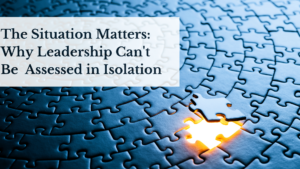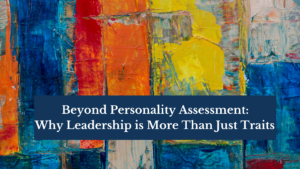Leadership has always been in the spotlight. Despite decades of research, it remains clouded by commercialisation, bias, and misinformation. According to Gartner (2025), for the third consecutive year, leadership development is the top priority for HR leaders. Their research highlighted that 70% of HR leaders believe that their current leadership programs are not adequately preparing leaders and managers to steer change, and 75% indicated that managers are feeling overwhelmed by their growing responsibilities. A recent study by Josh Bersin (2025) also highlighted just how ineffective current leadership strategies have become:
- Only 25% of companies believe their leadership development programs deliver high value.
- Only 24% say their leadership model is current or relevant.
So why, despite the $50 billion spent globally on leadership development every year, are organisations struggling with growth, productivity and morale? We believe one major contributing factor is the weakness of how leadership is defined, assessed and developed.
The uncomfortable truth: We are assessing and developing leaders the wrong way.
Assessing and developing leaders is big business, and it is a market that grows year on year. There is a plethora of approaches, products and services, including off-the-shelf leadership competency frameworks, which outline the skills and behaviours expected of leaders; personality questionnaires, which provide insights into individual preferences and interpersonal styles; and 360-degree feedback surveys, which gather perspectives from peers, direct reports, and managers to offer a holistic view of how an individual comes across to colleagues. Traditional training programs, such as workshops, executive education, online courses, and experiential learning, aim to develop leadership capabilities. Coaching and mentoring provide personalised support to help leaders enhance their skills and manage their teams. There are also accelerated development schemes, succession plans to enhance leadership planning, employee networks for support, stretch assignments to challenge and extend skillsets, and arranged meetings with senior leaders for visibility.
These approaches show positive intent and a genuine desire to enhance leadership. Unfortunately, all too often, this collective effort fails to yield the impact promised. While organisations can reassure the board that ‘action has been taken’, actually unlocking better leadership doesn’t seem to happen.
After all this input, why isn’t the quality of leadership rising? There are five root causes:
- Over-reliance on outdated leadership models
Most leadership assessments are built on narrow, outdated theoretical models that don’t capture the complexity of real-world leadership. Leadership is often conceptualised as a set of behaviours or values to be expressed; the logic runs that, if we help individuals boost these qualities, then they’ll become better leaders. But a more helpful way to think of leadership is as a process to get stuff done. More elegantly, we might define leadership as a goal-focused process, in a specific context, that involves coordinating people and resources to deliver results. This definition draws on the work of some of the giants of leadership research, including Prof. Gary Yukl (2020) and Prof. Fred Fielder (1967). Note the word context. What good leadership looks like varies, depending on several contextual factors, including organisational culture, industry type, role type, and the leader’s level in the hierarchy. Most leadership frameworks ignore these factors, instead presenting a checklist of worthy skills that are not joined up or applied to the setting.
- Lack of consensus on the definition of leadership
Leadership is one of the most studied yet least agreed-upon topics in business. In 2003, Warren Bennis famously identified 850 different definitions of leadership – no wonder there is no unified approach to assessing it! The disagreement over definitions of leadership has almost become a cliché in leadership research. The ambiguity has created obstacles in reaching a coordinated approach across organisations and has slowed progress in developing high-quality practical applications (Bass & Bass, 2008). Across industry, it has been challenging to create tools to select, promote, develop, and measure leaders with methods that are robust, objective, and aligned with organisational goals. It’s also been hard to find research comparisons.
- Personality as a proxy measurement
Personality questionnaires are commonplace in leadership selection and development, and they clearly have occupational relevance (Barrick & Mount, 1991). They measure personality traits, i.e. behavioural preferences, not leadership ability. Remember, leadership refers to getting stuff done. We might infer something about an individual’s predispositions from the results of the personality questionnaire but not what they actually do. Personality questionnaires certainly have their place, but they are static and non-contextual, and are a poor predictor of how someone will perform or is performing in a leadership role.
- 360-Degree feedback: powerful insight or popularity contest?
360-degree feedback is a popular tool for leadership development, one that seeks to build a holistic picture of how an individual’s skills and behaviour are seen by those surrounding this person (Church et al., 2019). Very occasionally, 360 tools are linked to an underlying theory of leadership. But most 360’s are atheoretical, and are composed of a series of behavioural questions that the designers thought was a good idea to include. One of the most common challenges is the lack of theoretical, evidence-based foundation in their design (Bracken et al., 2016) resulting in inconsequential data and wasted investment. It’s not unusual, when asking a manager how their 360-feedback session went, for them to say something like, “I need to use more eye contact in meetings. Oh, and there’s someone in my team who disagreed with most others.” While of some use, if they were designed on a strong theoretical foundation, the takeaways about leadership skills that matter could be so much more powerful. An additional issue is the bias, subjectivity, and guesswork of raters, reflecting the popularity of the individual rather than their effectiveness as a leader. This can undermine the accuracy of the assessment and hence the opportunity to realise meaningful developmental actions that could be taken to strengthen the leader’s effectiveness.
- Leadership Development for the few, not the many
Many organisations emphasise the development of their senior leaders and high-potential stars, at the expense of middle managers and supervisors. Of course, those steering the organisation now and in the future need development, but so do the much larger numbers of leaders in the engine room of the business. Middle managers and supervisors have a huge impact on delivery and the everyday work lives of the majority of employees (McKinsey, 2023). With development restricted to the few, it’s no surprise that organisations are not seeing a quantum change in leadership quality. This approach perpetuates a leadership capability gap across the organisation, and when senior leaders leave, there’s often a shortfall in available internal candidates for succession.
A Smarter Approach to Assessing Leaders
For organisations to thrive through uncertainty and grow sustainably, we need to pay more attention to how we assess and develop leaders. At Leadership Cubed, our mission is to shape a better world by building better leaders. This ambitious goal stems from our belief in the transformative power of effective leadership to drive positive change in organisations and society. The foundations of our approach rests on four key pillars:
- Measure what matters – To measure leadership effectively you need to assess three vital and interactive aspects: leadership skills, leadership level, and organisational context.
- Scientific and practical – Leadership assessment must be evidence-based, draw on high-quality scientific research and theory, and focus on real-world leadership performance data.
- Precision – Assessment methods should be robust and objective and linked directly to organisational outcomes and success metrics.
- Scalable & Inclusive – Designed to identify and develop leaders at all levels and from all backgrounds.
In the coming weeks, we will reflect on leadership development methodologies in more depth and respond with a new approach for assessing and improving the capability of current and future leaders throughout industry.
References
Barrick, M.R. & Mount, M.K. (1991). The big five personality dimensions and job performance: A meta-analysis. Personnel psychology, 44(1), pp.1-26.
Bass, B.M. & Bass, R. (2008). The Bass handbook of leadership: Theory, research, and managerial applications. 4th edn. New York: Free Press.
Bennis, W. & Nanus, B. (2003). Leaders: Strategies for taking charge. Collins Business Essentials.
Bracken, D.W., Rose, D.S. & Church, A.H., (2016). The evolution and devolution of 360 feedback. Industrial and organizational psychology, 9(4), pp.761-794.
Church, A.H., Bracken, D.W., Fleenor, J.W., & Rose, D.S. (eds.) (2019). Handbook of strategic 360 feedback. New York: Oxford University Press.
Fiedler, F.E. (1967). A theory of leadership effectiveness. New York: McGraw-Hill.
Gartner (2025). Top HR priorities for 2025: https://www.gartner.com/en/human-resources/trends/top-priorities-for-hr-leaders
McKinsey (June 26, 2003). Investing in middle managers pays off—literally. https://www.mckinsey.com/capabilities/people-and-organizational-performance/our-insights/investing-in-middle-managers-pays-off-literally
Yukl, G.A. and Gardner, W.L. III (2020). Leadership in organizations. 9th edn. Harlow: Pearson.




